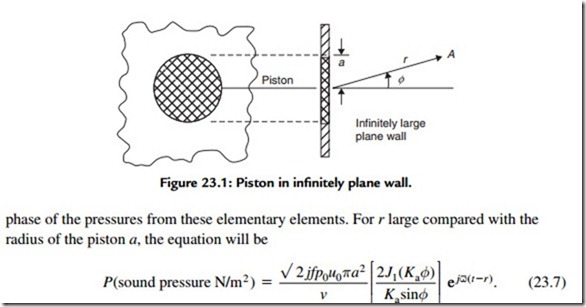Characteristic Impedance
The characteristic impedance is the ratio of the effective sound pressure to the particle velocity at that point in a free, plane, progressive sound wave. It is equal to the product of the density of the medium times the speed of sound in the medium (p0C). It is analogous to the characteristic impedance of an infinitely long, dissipation-less, transmission line. The unit is the Rayl, or Newton s/m3.
Radiation Impedance
When a vibrating diaphragm is placed in contact with air, its impedance to motion is altered; the added impedance seen by the surfaces that emit useful sound energy is termed “radiation impedance.” The radiation reactance is usually positive, corresponding to an apparent mass. Both reflective mass and resistance as seen by the diaphragm depend on its size, shape, frequency, and the acoustical environment in which it radiates.
Radiation From a Piston
Many radiating sources can be represented by the simple concept of a vibrating piston located in an infinitely large rigid wall. The piston is assumed to be rigid so that all parts of its surface vibrate in phase and its velocity amplitude is independent of the mechanical or acoustic loading on its radiating surface.
Figure 23.1 shows the problem: we wish to know the sound pressure at a point A located distance r and angle θ from the center of the piston. To do this, we divide the surface of the piston into a number of small elements, each of which is a simple source vibrating in phase with all the other elements. The pressure A is, then, the sum in magnitude and
where u0 = RMS velocity of the piston and J1() is Bessel function of the first order. Note that the portion of Equation (23.7) in square brackets yields the directivity pattern.
